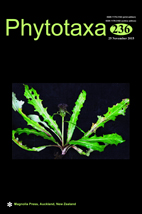Abstract
The diversity of the grass subfamily Bambusoideae native to Mexico is represented by two tribes, the tropical woody bamboos (Bambuseae) with three subtribes, Arthrostylidiinae, Chusqueinae and Guaduinae, and the herbaceous bamboos (Olyreae) with the single subtribe Olyrinae. In addition, Bambusa oldhamii, B. vulgaris, Phyllostachys aurea, P. bambusoides and Guadua angustifolia are cultivated in Mexico. The aim of this study is to provide morphological keys to the genera and species of the native and the most common cultivated bamboos in Mexico. In total, Mexico has 54 native, four herbaceous and 50 woody, species of bamboos. With the exception of a few states (Aguascalientes, Baja California, Baja California Sur, Coahuila and Tlaxcala), each of the remaining states has at least one bamboo species. Mexican bamboos are found from sea level to 3000 m in different types of vegetation including tropical dry forest, tropical subdeciduous forest, rain forest, cloud forest, pine-oak forest, pine-fir forest and xerophytic scrub. Herbaceous bamboos are represented by three genera: Cryptochloa, Lithachne and Olyra, whereas woody bamboos are represented by eight genera: Aulonemia, Arthrostylidium, Chusquea, Guadua, Merostachys, Olmeca, Otatea and Rhipidocladum. Thirty-one of the 54 bamboos are endemic to Mexico, and Chiapas, with 33 species, is the state with the highest bamboo diversity, followed by Veracruz with 25 and Oaxaca with 20. Chusquea is the most diverse genus with 21 species, followed by Otatea with ten and Guadua with seven. Twenty-seven of the 54 bamboo species deserve to be included in the Norma Oficial Mexicana (NOM-059-SEMARNAT-2010), and in the Red List of the International Union of Conservation of Nature to promote their conservation.

